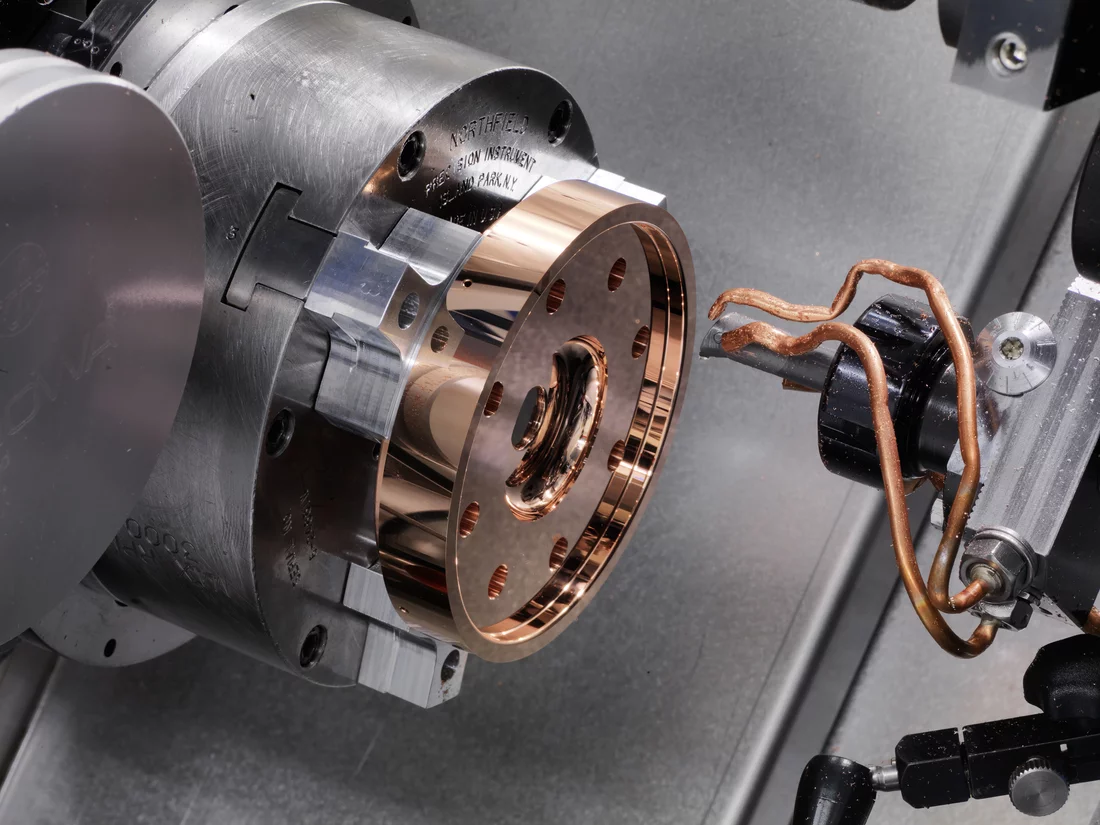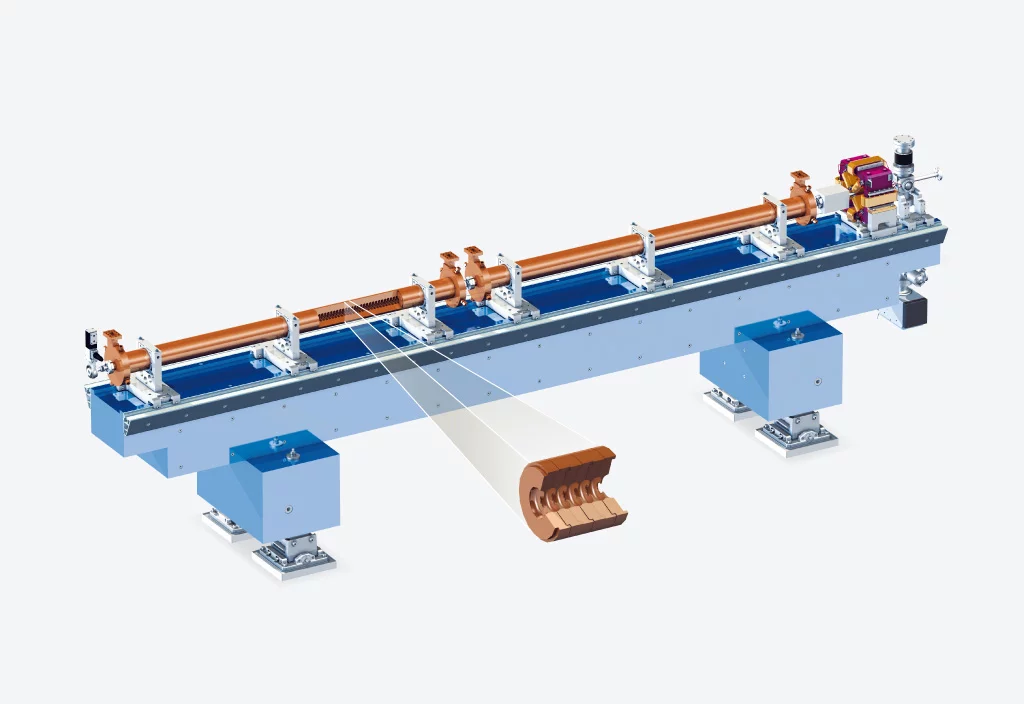In the linear accelerator, the electron beam receives the kinetic energy it needs in order to generate X-ray light. The linear accelerator is, in total, more than 300 metres long and at its heart there are 11,752 specially shaped copper discs in which the accelerating field is created.
The acceleration of the electrons takes place in several accelerator structures (see: Background) – they are accelerated in one structure and then fly on to the next one, in which they are further accelerated. At the beginning, there are also two so-called magnetic "chicanes" between the accelerating components, which guide the electrons along a bent path in such a way that the individual electron pulses become shorter overall.
Most of the acceleration occurs within the linear accelerator which consists of a total of 104 accelerator structures following one after the other. Each of these structures consists, in turn, of 113 so-called copper cups that, placed one after the other, create the correct shape of the accelerator structure. In order to fulfil their task, the total of 11,752 cups must be engineered to a precision of fractions of a millimetre.
Background: acceleration by electric fields in cavities
Electrons will be accelerated in SwissFEL by electric fields. An electric field can be imagined as a region in which a force acts on electrically charged particles – such as electrons – and accelerates them. It is, however, in practice not possible to create a constant electric field with which the complete acceleration needed at SwissFEL can be achieved. The field must therefore be variable. Thus, there will always be different regions: those in which electrons are accelerated and those in which this is not the case. Then the movement of the electron packets must be coordinated with the variation of the field in such a way that the electrons find themselves as much as possible in an accelerating region.In the linear accelerator, the electrons will be accelerated by a so-called travelling wave. In this process, the region of the electric field in which the electrons are accelerated in the correct direction moves through the facility at the speed of light. The electron packets which are fed into this section of the accelerator have already been brought to a velocity that is only slightly below the speed of light. As the speed of light is the highest possible velocity, the electrons can now hardly become faster and therefore find themselves always in the region in which they can be accelerated most strongly. This can be compared with a surfer who is always on the peak of a wave and thus moves with the wave. In this way, the electrons hardly become faster, but they do gain kinetic energy – and this is crucial for the X-ray light to be generated at SwissFEL.
Additional information
- First SwissFEL accelerator structure completed http://www.psi.ch/media/first-swissfel-accelerator-structure-completed
- Cooperation for perfect acceleration – media release about collaboration on building accelerator components.
- Copper cups for SwissFEL – article about accelerator development in the magazine “Fenster zur Forschung” (2/2011, In German only)


